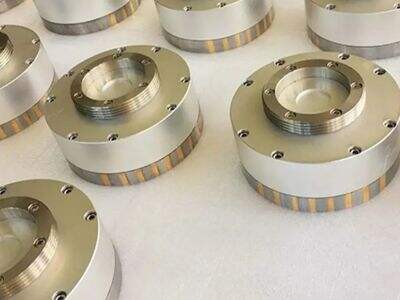MagLand also constructs special clamps for supporting metals while at work. These tools are extra efficient in most trades dealing with metallic: PAO: these tools are extra efficient in most trades dealing with metallic. The company has mainly two types of tools; the Permanent Magnetic Chucks and Electromagnetic Chuck. These two tools ostensibly are of the similar kind; however, if one looks closely at the mainstream description of these two tools, differences can be identified. In this guide, we will define the differences between these two types of chucks so that you can learn the characteristics of each to know which option is best for use in particular tasks.
Pros and Cons of Permanent Magnetic Chucks
HOPTM Permanent Magnet Chucks a metal working holding tool used by the strong magnet. They are so common, after all, because they make a simple process. Below are some benefits of permanent magnetic chuck:
Simple to setup: The superlative characteristic of Permanent Magnetic Chucks is its simplicity to setup. You simply put them on your work surface and they will have the metal in place without any additional action.
Electricity Free: These tools do not require electricity to operate them. Which means that you never have to spend time plugging them in or replacing batteries, making them cheaper to operate.
Permanent Magnetic Chucks are a better fit for lighter pieces of metal These tools run quite effectively, as long as you are working with medium-weight metal.
On the other hand, Permanent Magnetic Chucks have the following disadvantages:
Biggest disadvantage; Doesn't work with Heavy Metal; They may not grip something too heavy at all.
Permanent magnetic chuck can lose magnet power over time. Which suggests they are not as fierce with the metal as they used to be.
Fewer Metal Types: Not all types of metal will work with the chuck. This tool could be impractical as there are some metals that are not attracted to the magnet as well.
On the other hand, Electromagnetic Chucks, too have some limitations:
Higher Price: A downside to them is they generally have a higher cost for installation and use compared to Permanent Magnetic Chucks. If you are trying to save some money, this is something to keep in mind.
Electricity Required — They require electricity to operate, which may render them more expensive in the long run. In order to do this, you will need to be conscious of how much energy you are using.
Difficult to Operate: Electromagnetic Chucks is a little difficult to set up and operate. You will have to plug them into a power source and control the magnet which takes some practice.
Permanent and electromagnetic chucks
It is always a question of how to decide which tool will best suit a requirement? The thing is, the answer will vary depending on the type of work that you have to accomplish. A Permanent Magnetic Chuck would be the obvious best pick for a person who does primarily work with light metal and may not need a complicated device. Besides, it will mean time and effort would be saved as well. Still, if you ‘ll be using the heavier metal and want the control over when and how the metal is held, the Electromagnetic Chuck may still be better for those particular jobs.
Which Chuck Lasts Longer?
Longevity of each tool is also very important as well to know when each tool will be needed for use again. However, Permanent Magnetic Chucks lose their magnetic property over time, and therefore will not hold metal as tightly as it will when the Permanent Magnetic Chuck was newly bought. But if properly maintained, it still lasts for couple of years. Electromagnetic Chucks also have long life but you have to adhere to certain maintenance plan which are not needed in other tools. Nonetheless since it operates on electrical energy it likely is actually additional vulnerable to breaking up should it is always not serviced properly.
Which Chuck Is Easier to Use?
Finally you might be asking yourself as to which one is easier to deploy and run? A Permanent Magnetic Chuck is easy. It just sits on your work surface and as soon as you put the metal up against it, it immediately grabs it. Which makes it the perfect choice if you’re new to programming or just want to hit the ground running. An Electromagnetic Chuck, however, can be a little complex. They drive it with power in order to deploy it then try to figure out how to shut it off when it clamps the metal. This takes a little longer to master but once mastered, getting it run is as much a Permanent Magnetic Chuck as it can be.

 EN
EN
 AR
AR
 CS
CS
 DA
DA
 NL
NL
 FI
FI
 FR
FR
 DE
DE
 IT
IT
 JA
JA
 KO
KO
 NO
NO
 PL
PL
 PT
PT
 RO
RO
 RU
RU
 ES
ES
 SV
SV
 TL
TL
 ID
ID
 SK
SK
 UK
UK
 VI
VI
 ET
ET
 HU
HU
 TH
TH
 TR
TR
 AF
AF
 GA
GA
 XH
XH

